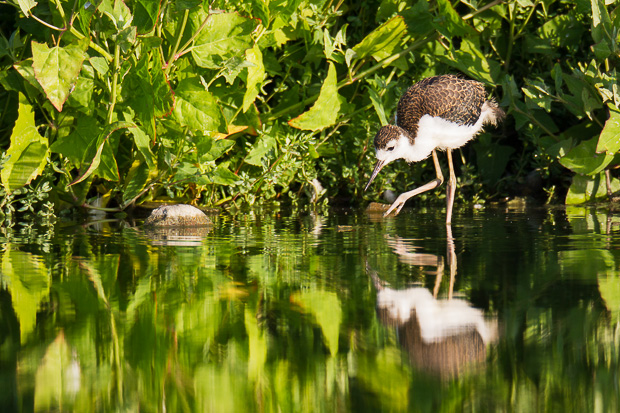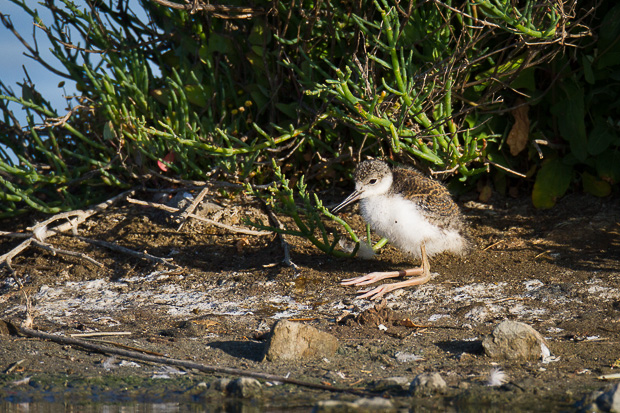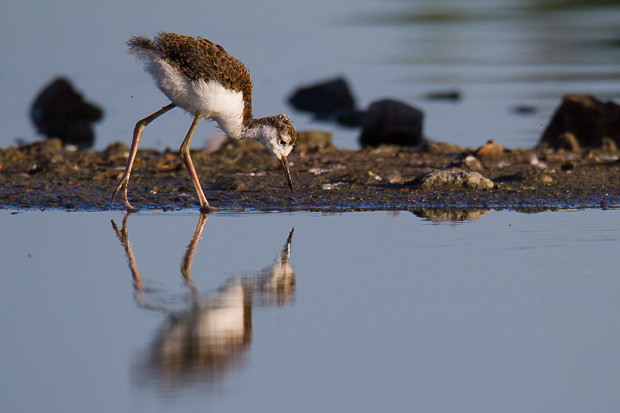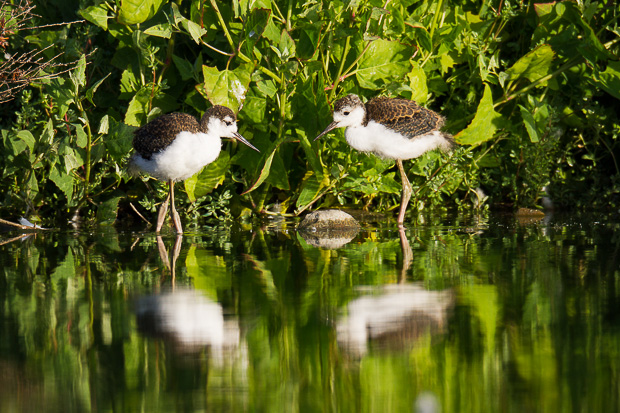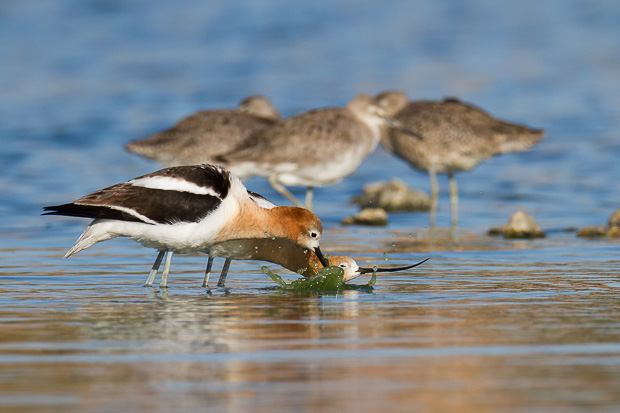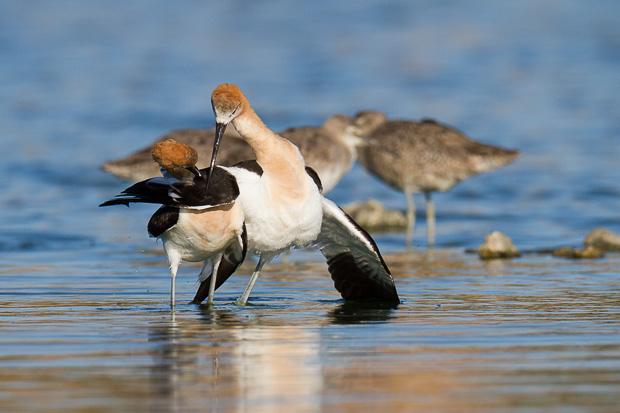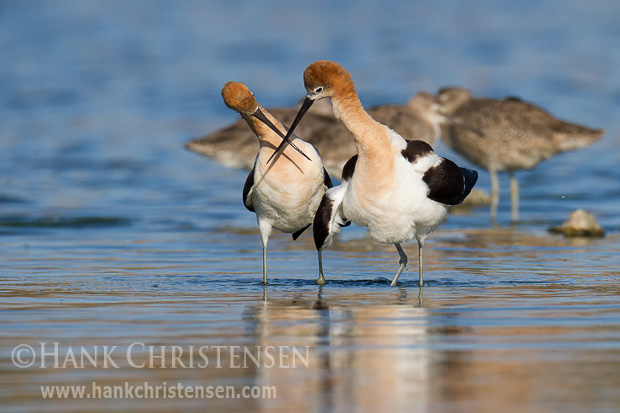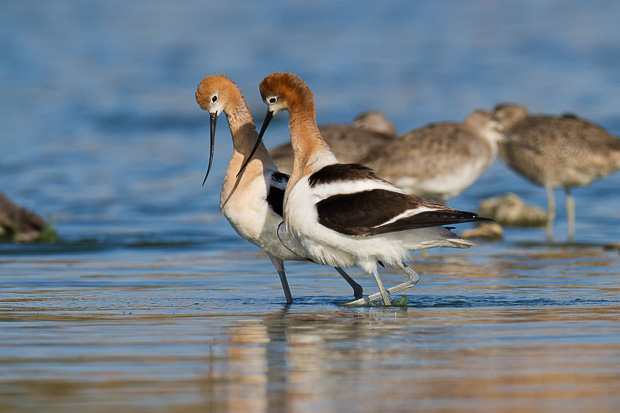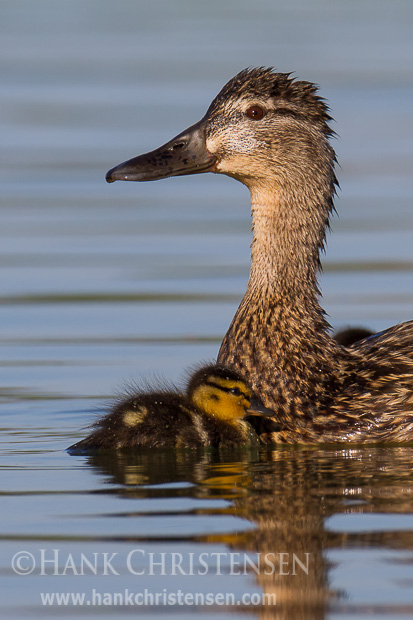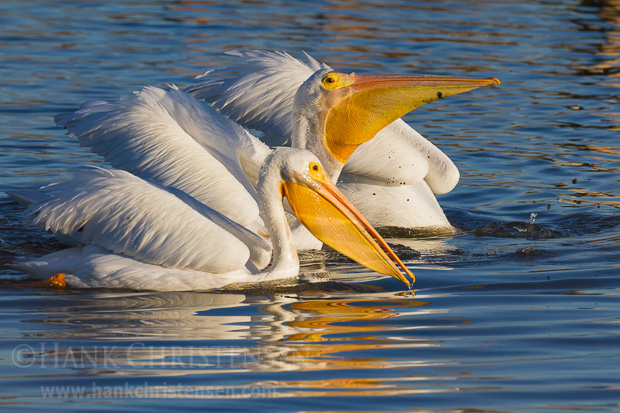
I stopped at one of my local spots to photograph birds and was rewarded with an abundance of not only one pelican species, but both species that are regularly seen in California – the American White Pelican and the Brown Pelican. Usually I don’t see both in one area, but here they were at Shoreline Park in Mountain View, each doing their own thing.
First, I saw a half dozen white pelicans swimming together, and fishing simply by dunking their heads underwater and scooping up great billfuls of water. In this way, they were able to catch small fish, but on a fairly regular basis.
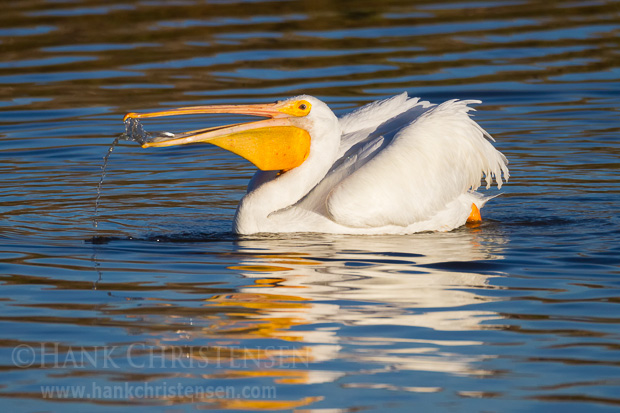
Most of the time, at least one pelican would remain above water while the rest would go for fish. They would rotate this way, dunking, scooping and eating. At some points however, I saw all pelicans in the group go under at the same time. I waited to see if I could get them lined up, and finally I saw a moment of symmetry in order to capture this photo.
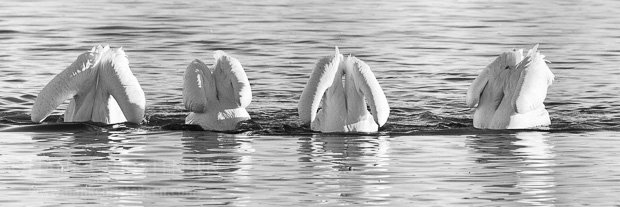
Next it was on to the brown pelicans, who were circling above Shoreline Lake, and going through much more effort to fish. A pelican would circle for a while, keeping a close view of the surface of the water.
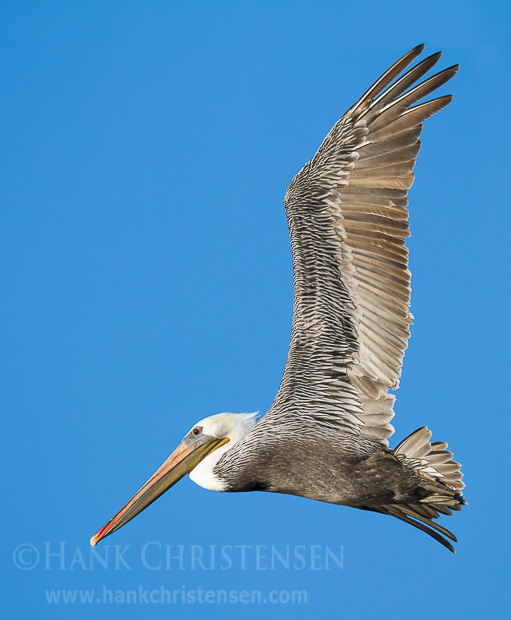
When it saw a movement of fish in the lake below, it would stop its forward flight and sort of hover in air.
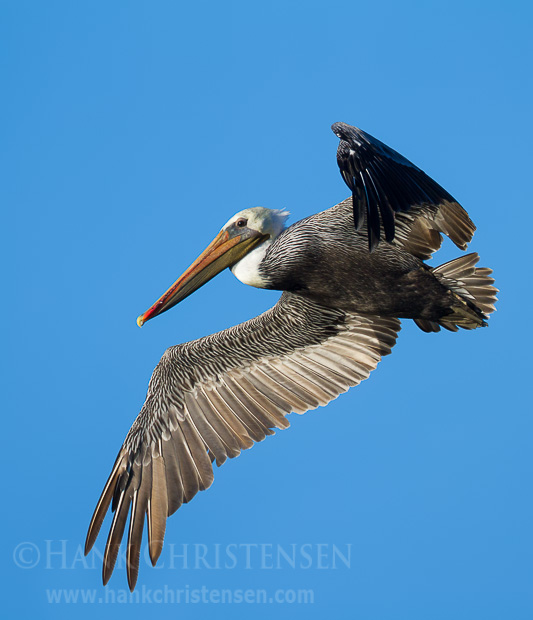
At this point, it would plummet to the water surface in a dive, completely submerging its entire body underwater. The success rate of fishing this way seemed lower than the white pelicans, but perhaps when the diving did work, it rewarded them with bigger fish. It was fine by me, because their activity rewarded me with many flight shots and photographs of the birds on the surface of the water.
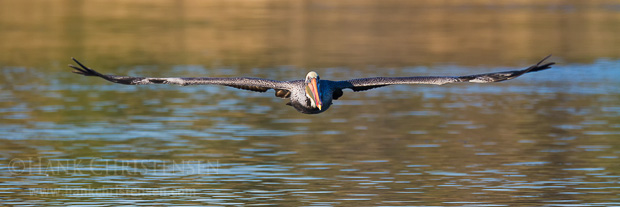
After a dive, the pelican would drain its bill of water, and swallowing any fish it caught. Occasionally, I was rewarded with a vigorous head throw.
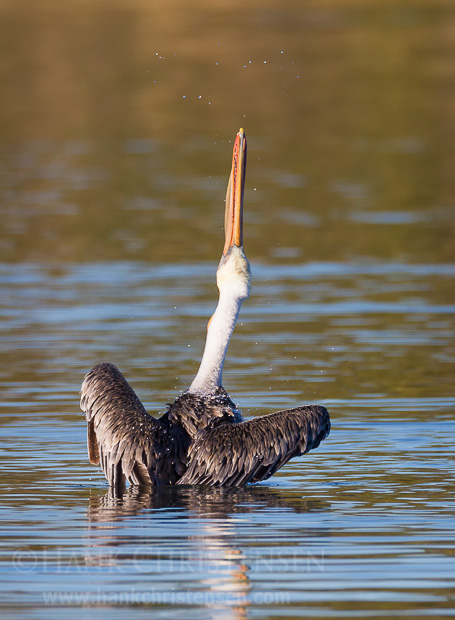
After a couple of hours of shooting, I was pretty pelican’ed out and I packed up to leave. But it was great to see both species side by side on a single morning.

